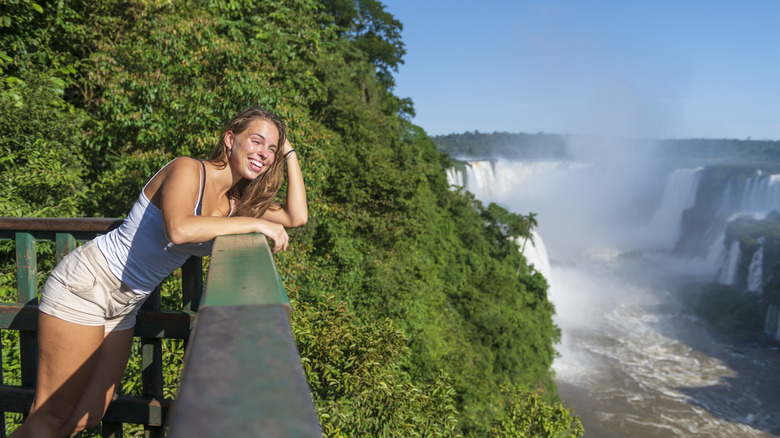Top sights and things to do
Since the park is split between Argentina and Brazil, visitors basically get a two-for-one deal in terms of perspective. And although Argentina boasts nearly 80% of the falls — the border line cuts right through some of them — it’d be an oversight to skip out on the Brazilian side.
In terms of what to see, out of the 275 individual waterfalls that collectively define Iguazú, the crown jewel is the famous Garganta del Diablo (Devil’s Throat). Standing at 269 feet tall and 492 feet wide, this behemoth of a cascade offers a one-of-a-kind experience that combines power, sound, and mist. And while from the Argentine side, you get a top-down view, getting your passport stamped and hopping over to the Brazilian side means a dramatic change in perspective. From that vantage point, you’re actually looking up at the falls — surrounded by a 360-degree view and a peek at other park visitors who are standing on the Argentinian platform.
But Iguazú National Park isn’t all about the water. Away from the roaring falls, visitors who explore the park’s trails and pathways can also come face to face with a range of local and protected wildlife. From toucans and parrots to monkeys, honey bears, and the often-spotted coatis, the park is brimming with biodiversity. There’s even a chance to spot much rarer residents — such as the puma or jaguar — taking a stroll through the trees.
Visiting Iguazú National Park

The easiest way to access Iguazú National Park is through Puerto Igazú (in Argentina) and Foz do Iguaçu (in Brazil), both cities act as direct gateways to the falls. Additionally, both have international airports, which means you can easily catch a connecting flight from the United States through many major cities in South America.
In terms of admission, the entrance fee to Iguazú National Park also varies depending on which side you’ll be accessing it from. The fee on the Argentinian side of the park is roughly $39 for adults and $19 for children. On the other hand, from the Brazilian side, the adult ticket price is the same, but children under seven are allowed to enter for free.
Lastly, when it comes to picking the best time to visit Iguazú National Park, traveling between late March and June or between August and November is your best bet for seeing the falls in all their glory and avoiding some crowds. During these times, the weather will be pleasant, most trails will be open, and you’ll have a much lower chance of getting caught in the rain. Alternatively, if you don’t mind getting even more wet during your visit, the falls reach their peak around November and December due to heavier rainfall.

